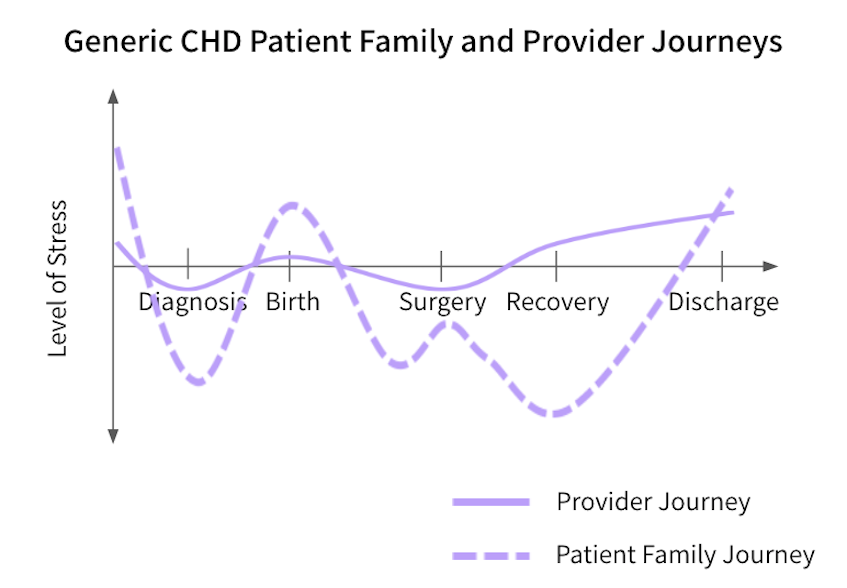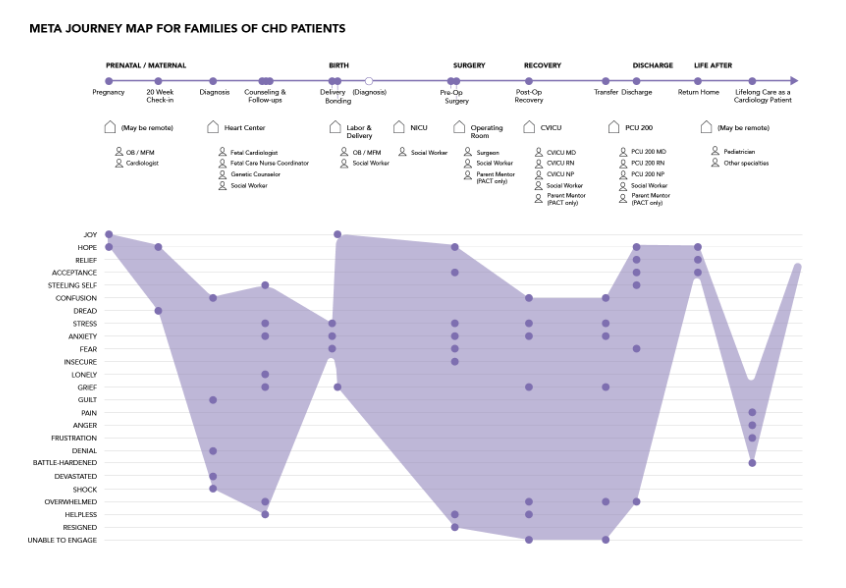Mapping the Patient Family Journey
Challenge
I was the design research lead for a project that Medicine X’s design studio worked on with Lucile Packard Children’s Hospital (LPCH). Our LPCH stakeholders had received a $100,000 grant from the hospital towards improving the experience of congenital heart disease patient families, and they were prepared to move forward with creating their proposed solution, a series of educational videos. Working with a design lead on the hospital side, we encouraged our stakeholders to take a step back and spend time understanding the end-to-end patient family experience before moving forward with opportunities to improve their experience.
Process
Our first step was to identify missing project stakeholders and create alignment on the team. Healthcare projects are often spearheaded by doctors, potentially excluding other critical voices in healthcare that could help capture a fuller narrative. To address this shortcoming, Medicine X’s design studio uses a methodology called Everyone Included™, in which every touchpoint in the patient family experience, including doctors, nurses, social workers, patient family mentors, and patient families themselves, are invited to participate in the design process. Facilitated by myself and the other design lead, we collectively developed a research protocol that helped get everyone on the same page about our research approach.
Our approach consisted of a mixture of three different methods: in-depth interviews with patient families and their care teams; focus groups with pediatric doctors; and observation of patient family-care team interactions. We conducted the research in pairs and acclimated our stakeholder partners to the design process by pairing them with myself or the other design lead.
Unexpectedly, we realized that the most useful tool in our research was journey mapping, which we had included as a sub-component of the interviews and focus groups. While journey mapping is typically used to synthesize user data after it has been collected, we found it helpful to have our research participants map their journey at the start of sessions to create a shared understanding and language around their experiences. It was also interesting to compare these artifacts between patient families and their care teams to see where they were similar, and where they diverged. Using this data, we were able to identify the greatest areas of need in the healthcare journey for congenital heart disease patient families.


Outcome
Since I was only working on this project for its design research phase, I presented the research findings to our LPCH stakeholders at the phase’s conclusion and suggested emergent opportunities that the team could move forward with. Inspired by this work, the hospital design lead and I later ran a workshop on journey mapping at the Medicine X conference in September 2019 to equip other healthcare teams to leverage journey mapping as a tool in their design and improvement work. Most recently, I presented this work at the DiabetesMine conference in November 2019.
Length:
12 weeks
Tools:
Adobe Illustrator
Keynote
Skills & Methods:
Journey Mapping
In-depth Interviews
Focus Groups
Observation
Everyone Included™
Project Management

